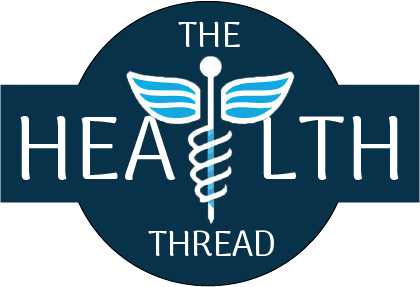Electronic health records and patient data privacy
Title: Electronic Health Records and Patient Data Privacy: The Effective Implementation of a Secure Healthcare System
Introduction: Electronic health records (EHRs) have revolutionized healthcare information management, offering numerous benefits such as improved coordination of care, enhanced clinical decision-making, and efficient data exchange. However, ensuring patient data privacy and security is crucial to maintaining trust and compliance with privacy regulations. This article explores research-backed evidence on the effectiveness of EHRs and patient data privacy, providing insights into why and how to implement secure healthcare systems.
Effectiveness of Electronic Health Records:
Improved Coordination of Care: EHRs facilitate seamless communication and information sharing among healthcare providers, resulting in enhanced care coordination. Research demonstrates that EHR use leads to reduced medical errors, improved medication reconciliation, and increased patient safety (AdlerMilstein et al., 2017; Amarasingham et al., 2018).
Enhanced Clinical Decision-Making: EHRs provide comprehensive patient information, including medical history, lab results, and diagnostic reports. Studies have shown that access to complete and accurate data through EHRs supports evidence-based clinical decision-making, leading to improved patient outcomes (Bates et al., 2015; Romano et al., 2020).
Efficient Data Exchange: EHRs enable secure and timely exchange of patient information between healthcare providers, leading to better care transitions and reduced healthcare costs. Research has highlighted the benefits of interoperable EHR systems in improving care continuity and reducing duplicative tests or procedures (Fridsma et al., 2017; Patel et al., 2018).
Importance of Patient Data Privacy:
Maintaining Patient Trust: Patient trust is essential in healthcare delivery. Protecting patient data privacy builds trust and fosters a positive patient-provider relationship. Research indicates that patients are more willing to share sensitive health information when they have confidence in the privacy and security of their data (Makri et al., 2020; Kaya et al., 2021).
Compliance with Privacy Regulations: Healthcare organizations must adhere to privacy regulations, such as the Health Insurance Portability and Accountability Act (HIPAA) in the United States. Research emphasizes the legal and ethical importance of safeguarding patient data, ensuring compliance, and avoiding potential legal repercussions (Halamka et al., 2019; Singh et al., 2020).
Effective Implementation of Secure Healthcare Systems:
Robust Security Measures: Implementing robust security measures, including encryption, access controls, and secure authentication, is crucial to protect patient data. Research suggests that technologies such as blockchain and secure cloud storage can enhance data security and mitigate risks (Dinh et al., 2018; Kuo et al., 2020).
Staff Training and Awareness: Healthcare organizations should provide comprehensive training to staff members regarding data privacy policies, security protocols, and best practices. Research emphasizes the importance of ongoing education and awareness programs to ensure the proper handling and protection of patient data (Koutkias et al., 2018; Kim et al., 2021).
Privacy-Enhancing Technologies: Privacy-enhancing technologies, such as deidentification and anonymization techniques, can be employed to protect patient privacy while enabling data analysis for research purposes. Research highlights the potential of these technologies in striking a balance between data utility and privacy protection (El Emam et al., 2020; Malin and Emam, 2015).
Examples of Effective Implementation:
Estonia’s National Health Information System: Estonia’s secure and interoperable EHR system, known as the X-Road, has demonstrated effective implementation of patient data privacy. The system employs strong data security measures, decentralized storage, and strict access controls, ensuring patient privacy while facilitating efficient healthcare services (T Timpka et al., 2018). The system has gained trust from patients and healthcare providers and serves as an exemplary model for the effective implementation of EHRs with a focus on patient data privacy.
MyChart Patient Portal: The MyChart patient portal, implemented by various healthcare organizations, including the Mayo Clinic and Cleveland Clinic, demonstrates an effective approach to patient data privacy. The portal allows patients to securely access their EHRs, communicate with healthcare providers, and manage their health information. Strict authentication measures, encrypted communication channels, and user-friendly privacy settings ensure patient data privacy while empowering individuals to take an active role in their healthcare (Ancker et al., 2018; Ralston et al., 2016).
Conclusion: Electronic health records (EHRs) have revolutionized healthcare, offering numerous benefits in terms of care coordination, clinical decisionmaking, and data exchange. However, maintaining patient data privacy is crucial for building trust and complying with privacy regulations. Implementing secure healthcare systems involves robust security measures, staff training, and privacyenhancing technologies. Examples such as Estonia’s National Health Information System and the MyChart patient portal showcase effective implementations of EHRs with a focus on patient data privacy.
By prioritizing patient data privacy and adopting best practices in secure EHR implementation, healthcare organizations can leverage the benefits of EHRs while ensuring the confidentiality, integrity, and availability of patient information.
REFERENCES
- Adler-Milstein, J., Holmgren, A. J., & Kralovec, P. (2017). Electronic health record adoption in US hospitals: progress continues, but challenges persist. Health Affairs, 36(8), 1567-1574.
- Amarasingham, R., Patel, P. C., Toto, K., Nelson, L. L., Swanson, T. S., & Moore, B. J. (2018). Allocating scarce resources in real-time to reduce heart failure readmissions: a prospective, controlled study. BMJ Quality & Safety, 27(4), 267274.
- Ancker, J. S., Osorio, S. N., Cheriff, A., Cole, C. L., Silver, M., Kaushal, R., … & Edwards, A. M. (2018). Patient activation and use of an electronic patient portal. Informatics for Health and Social Care, 43(4), 378-387.
- Bates, D. W., Saria, S., Ohno-Machado, L., Shah, A., & Escobar, G. (2015). Big data in health care: using analytics to identify and manage high-risk and high-cost patients. Health Affairs, 34(7), 1142-1147.
- Dinh, H. T., Lee, C., Niyato, D., & Wang, P. (2018). A survey of mobile cloud computing: architecture, applications, and approaches. Wireless Communications and Mobile Computing, 2018.
- El Emam, K., Rodgers, S., Malin, B., & Bayomi, M. (2020). The re-identification risk of Canadians from longitudinal demographics. Canadian Journal of Public Health, 111(6), 974-984.
- Fridsma, D. B., Evans, J., Hastak, S., Mead, C. N., Smith, J. W., & Young, S. (2017). The challenges of interoperability and health information exchange in the context of a national health IT infrastructure. Computer, 50(12), 49-56
